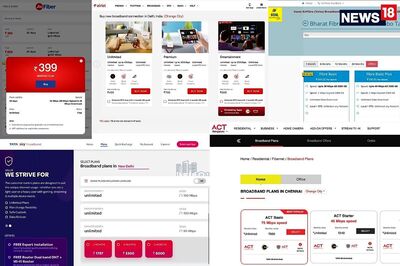
views
Mathematics and computing as major core areas in Classes 11 and 12, modular board examinations for Class 12, greater flexibility in subject choice and doing away with streaming into science, humanities and commerce as well as semester system for Classes 11 and 12 are among major recommendations in the draft National Curriculum Framework, 2023, released late on Thursday.
For the “truly holistic development” of students, the draft recommends a host of major policy changes in secondary school education (Classes 9, 10, 11 and 12) in the 5+3+3+4 curricular and pedagogical restructuring as envisioned in the National Education Policy (NEP) 2020.
The national curriculum framework (NCF) addresses education for the age group of 3 to 18 years, across an entire range of diverse institutions. The draft NCF document was made public on Thursday for receiving feedback.
The document has been developed by a 12-member steering committee headed by former ISRO head K Kasturirangan, who has played a major role in formulating the NEP as well.
Modular board exams for Class 12
According to the draft, the committee recommends holding Class 12 board examinations at least twice a year to ensure that students have enough time as well as opportunity to perform well. Modular board examinations will be offered as opposed to a single examination at the end of the year. The final certification will be based on a cumulative result.
“Students can then appear for a board examination in courses they have completed and feel ready for. This process could be made possible through the creation of a comprehensive test item bank, which can be used to create tests using suitable software. This will enable the move towards a system of on-demand examinations in the near future as described in NEP 2020,” the document read.
Engagement with a variety of courses
The draft proposes to do away with the regimented system of streaming into science, arts/humanities and commerce after Class 10. It suggests offering students a wide variety of subject combinations. For example, mathematics along with language or music through 16 choice-based courses to be cleared in Classes 11 and 12.
“The current practice of streaming into science, arts/humanities and commerce will be replaced by a design that enables both breadth through engagement with a variety of courses across streams and depth in areas chosen by students. Students will receive greater attention to their personal and career aspirations as they ready themselves for work or higher education,” stated the draft.
Major changes in course structures
For Class 10, however, board exams will remain as they are. The draft also recommends major changes in Classes 9 and 10, like introducing eight “essential courses”. At present, students across boards, including Central Board of Secondary Education (CBSE), students have to clear at least five subjects in order to pass Class 10.
The draft NCF recommends dividing secondary education into two phases – broad curricular areas (eg science, social studies and humanities) will be offered in Classes 9 and 10 to enable breadth; and disciplines (like history, physics, language) within each curricular area will be offered in Classes 11 and 12 to enable depth. Students will be able to choose specific areas and disciplines.
To ensure that students have adequate breadth, they have to choose disciplines from at least three curricular areas. To ensure depth, when they choose a discipline, they have to complete four choice-based courses in that discipline.
The eight broad curricular areas include – mathematics and computing, science, social studies, humanities, physical education, arts education, vocational education and interdisciplinary courses.
For example, if a student chooses social studies (curricular area) and history (discipline) within that, she must complete all four courses in history. She could then choose humanities as the second curricular area and do four courses in philosophy. Mathematics could be the third curricular area with four courses in computer science. The fourth set of courses could be from one of the three curricular areas already chosen or from a completely different one.
The draft stated that all secondary schools will need to offer essential courses in all curricular areas so that students are able to complete Class 10. While schools across the country do not have enough infrastructure and resources to instantly offer the wide variety of combinations as suggested, the committee acknowledged that many might struggle to offer this entire range.
“This, in effect, limits the choice for students. To ensure that students have a reasonable choice, secondary schools, to begin with, must offer at least one curricular area from each of the following categories: humanities or social science or science or mathematics and computing; interdisciplinary areas; and arts or sports or vocational education,” the document stated.
It also laid emphasis on the use of digital media in developing course textbooks. “A lot of content that complements the textbook can be made available through digital media. It is important for the technical expert to be part of the textbook development team from the start,” it read.
Ministry officials had last month said revised course textbooks at all levels of school education based on the new NCF, which are likely to be launched by 2024-25 academic session.
What experts are saying
Ameeta Mulla Wattal, chairperson and executive director (education and training), DLF Schools, Gurugram, said the introduction of modular board exams as well as semester system are welcome steps. It might be challenging to implement these policy changes across India with making available as many human resources and upgrading infrastructure.
“The semester system will help children move away from rote. Second, now that universities and colleges in India are mostly in semester mode, introducing it in secondary school will prepare students for it. Also, when you study concepts in small patches, it is easier to learn and assimilate better. Besides, having two board exams instead of one will relieve pressure on students and distribute it better allowing them to learn at their own pace,” Wattal said.
Meeta Sengupta, an educationist, agreed. “Having a single exam creates enormous pressure on students, as their career or future depends on that one day when they might not be able to reach the exam centre on time or just be having a bad day. Giving them another chance helps them even out the pressure,” she said.
She further said while introducing essential courses and semester system were progressive recommendations, challenges might arise in implementation at small schools unless innovative methods for developing such resources were applied.
“The semester system is better against streaming, as it allows for a sort of T-shaped learning, where students have some depth in two subjects and also some range, so that they can create combinations for future career paths. Streaming is outdated as it forces students to go into depth in a few subjects but doesn’t allow any range for skills to be matched for a chosen career,” she added.
Read all the Latest India News here
















Comments
0 comment